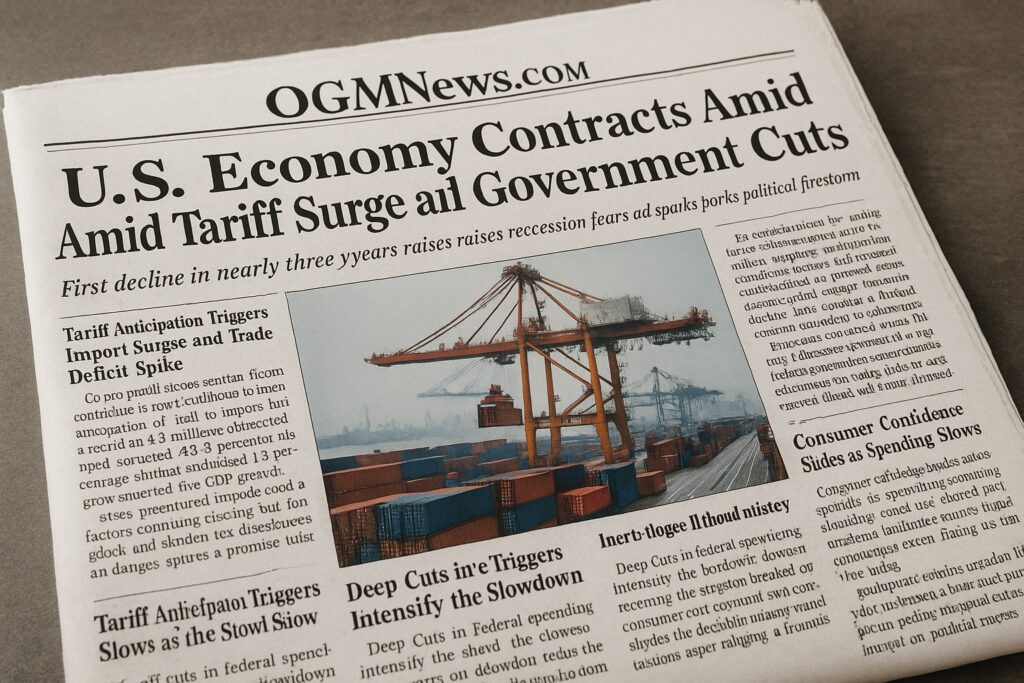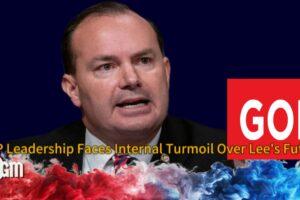The USA economy unexpectedly shrank in the first quarter of 2025, marking a stark turnaround from the growth momentum seen at the end of 2024. According to the Commerce Department’s preliminary GDP estimate released on Wednesday, the gross domestic product (GDP) fell at an annual rate of 0.3%, compared to a 2.4% expansion in the fourth quarter of 2024. The decline represents the steepest contraction since early 2022, when the economy was still rebounding from the pandemic-induced downturn.
Economists had anticipated modest growth of 0.8% in the January-March period, based on a FactSet poll. However, the sharp decline caught many off guard and highlighted the fragile state of the U.S. economy amid heightened trade and fiscal uncertainties. Businesses rushed to import goods in anticipation of President Donald Trump’s newly announced tariff policies, distorting the typical flow of trade and inventory dynamics.
While imports are technically counted as a subtraction in GDP calculations, economists argue they often reflect increased consumption or investment rather than weakness. “There has never been a recession caused by imports,” said Michael Pearce, deputy chief USA economist at Oxford Economics. “They show up as an offsetting positive elsewhere.”
Trump Tariffs Spur Preemptive Stockpiling
The economic slowdown is widely attributed to businesses accelerating imports ahead of the Trump administration’s sweeping tariff regime, which was officially announced on April 2 but anticipated for months. The “Reciprocal Tariffs” program aims to match tariffs imposed on USA goods by foreign countries, prompting fears of escalating global trade tensions and increased costs for American firms.
Retailers and manufacturers scrambled to front-load inventories during the first quarter, leading to a surge in imports that distorted GDP figures. While the rush to stockpile may have boosted some business activity in the short term, it likely masked underlying weakness in domestic demand and sowed the seeds for a slower second quarter.
“The figures are noisy,” economists warn, noting that the pre-tariff surge may not reflect sustainable economic activity. The long-term impact of the tariffs, which are typically paid by USA importers and often passed on to consumers, remains a key concern. Higher consumer prices could erode purchasing power and dampen economic growth in the months ahead.
Impact of DOGE Cuts on USA Government Spending

In addition to tariff-related distortions, a sharp 5.1% drop in government spending contributed to the GDP contraction. The decline follows aggressive cost-cutting measures by President Trump’s Department of Government Efficiency (DOGE), led by tech billionaire Elon Musk. The department has enacted deep reductions across federal agencies, including shuttering the Consumer Financial Protection Bureau and slashing jobs and funding for health, science, and education programs.
According to data, DOGE-related cuts have resulted in the termination of hundreds of thousands of federal positions — one of the largest rounds of public sector layoffs in U.S. history. While intended to reduce bureaucratic inefficiency, the measures have raised concerns about their impact on overall economic demand.
Economists project that the U.S. economy will grow just 1.9% in 2025, a significant slowdown from the 2.8% growth recorded in 2024. As tariffs raise prices and DOGE-driven cuts reduce federal investment and employment, analysts warn that consumer spending — the largest driver of the USA economy — could take a hit.
ADP Jobs Report Signals Labor Market Weakness
Further signs of economic trouble emerged on Wednesday with the release of the ADP National Employment Report. Private employers added only 62,000 jobs in April, less than half of the 134,000 jobs forecast by economists. The data adds to growing evidence that the labor market may be softening under the strain of inflation and policy uncertainty.
The official USA Labor Department’s jobs report, due Friday, is expected to show a net gain of 135,000 jobs in April — down significantly from the 228,000 added in March. A consistent weakening in job creation could reinforce fears that the U.S. economy is entering a period of stagnation or even recession.
“The combination of weak ADP data, the GDP report, and other indicators increasingly suggest a recession may have begun,” said David Russell, global head of market strategy at TradeStation. “The risk environment is rising, and consumer sentiment may follow suit.”
Economists Urge Caution Amid Mixed Signals
Despite the bleak headline figures, some economists urge caution in interpreting the GDP decline as a definitive sign of recession. The surge in imports and business inventories ahead of the tariff rollout may reverse in subsequent quarters, potentially stabilizing growth. Similarly, the full economic effects of DOGE’s budget cuts and the Trump tariff policies may not be fully visible until the second half of the year.
Still, the risks are mounting. Higher prices from tariffs could deliver what Oxford Economics calls a “real income shock,” weakening consumer spending — the mainstay of economic growth. Meanwhile, public sector contraction could undercut long-term productivity and innovation.
Policymakers and investors are watching closely as new data emerges. The second-quarter GDP report, expected in late July, will provide a clearer picture of whether the U.S. economy is facing a temporary stumble or entering a prolonged downturn.














